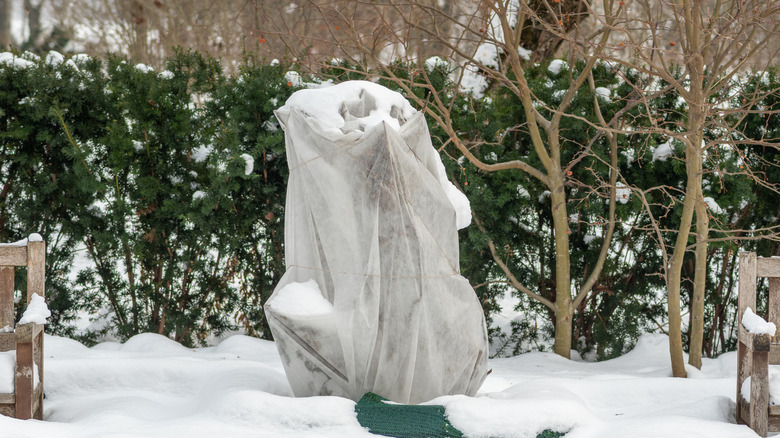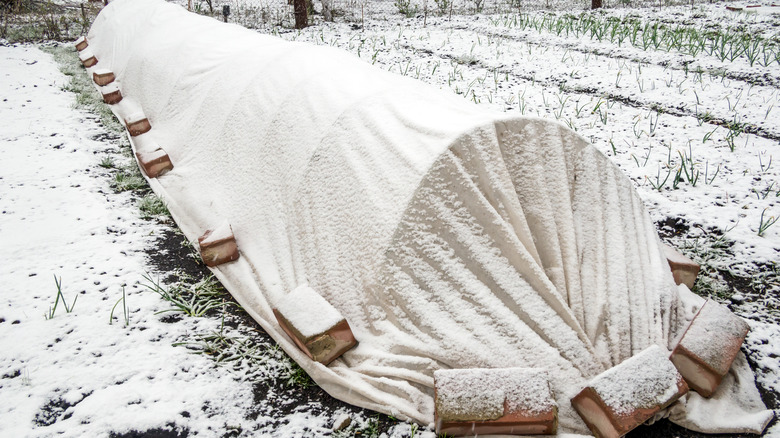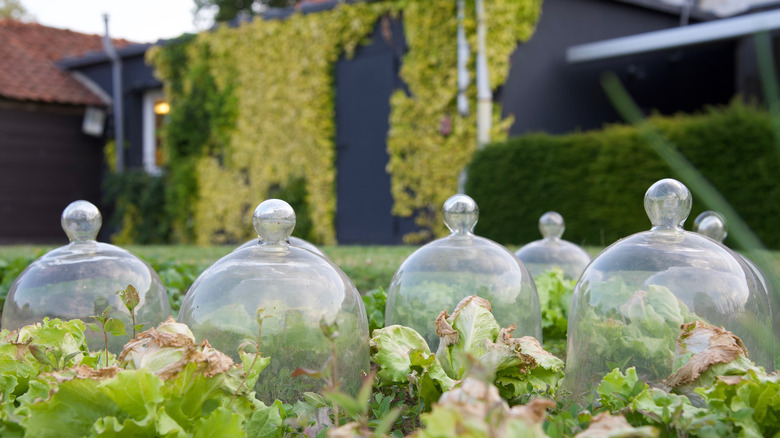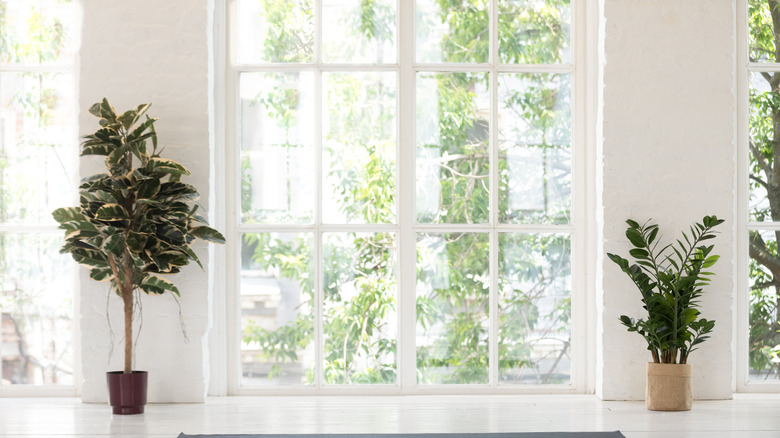How To Cover Plants From Frost
We may receive a commission on purchases made from links.
When summer comes to an end, it's time to start preparing your plants for winter. It's important to protect plants from frost so that they don't die. Frost occurs when the temperature dips below 32 degrees Fahrenheit, according to Homes & Gardens. If your plants are left unprotected during this weather, their new growth will be affected first, with leaves wilting, becoming black or brown, turning crispy, and dying off. Soon this can happen to the entire plant if nothing is done. Some plants are hardier and can regrow from the stems or roots even after all of their foliage dies off.
Looking at a plant's hardiness rating will tell you how resistant that type of plant is to the cold. Each type of plant freezes and dies at a different temperature. The most vulnerable plants to the cold are young seedlings, tender perennials, half-hardy plant varieties, and tropical and subtropical plants.
Cover with a blanket
Covering your plants with a blanket is great if you are looking to quickly protect them from frost. It works by insulating the plants with the warm air from the ground around the plant, according to Gardening Know How. Although, there are more effective ways than throwing a blanket over your plants.
Adding plastic over the blanket creates another layer of insulation, but it comes with some issues to look out for. If you choose to use plastic, you still need a layer of cloth between the plant and plastic, or your plant will be damaged. You'll also need to remove the plastic in the morning to stop any condensation that formed inside the plastic from freezing and defeating the purpose of the wrapping. Another way to take this method up a notch is with wood stakes and burlap. Instead of wrapping the plant, place the stakes into the ground in a circle around the plant and then wrap the burlap around the stakes. Place hay or wood mulch in the space between the plant and the burlap. With this method, the hay insulates the plant without retaining any moisture.
Create a cloche
Using a cloche is similar to the blanket method but for smaller plants. A cloche is a bell-shaped cover made from plastic or glass, according to Rural Sprout. It works the same as a blanket by insulating the plant in the container with warmth from the ground. You can either purchase a pack of six plastic cloches for about $15 somewhere like Amazon, or you could make one out of everyday household items. The easiest way to create a cloche is by turning over a bucket or flower pot, but this would also block out any sun. Milk jugs work great once you cut off the bottom because you can open the top to create airflow.
To use a cloche, place it over your plant, with it slightly digging into the dirt. The best time to use them is in the late afternoon before it gets dark. Then in the morning, you would take it off, so your plants get to see the sun and to stop any condensation from freezing the next night.
Move indoors
Moving potted plants indoors when the weather gets colder is important because plants in containers are more prone to frost damage than those plants that are planted in the ground. This is because when they're in a pot, the plant can't get the same insulation that the ground provides to in-ground plants, according to Rural Sprout. Frost can be prevented by bringing potted plants indoors, but you don't want to put them in a place that is too warm, or the plants could be shocked from the sudden temperature change. An ideal spot would be in a garage, shed, or basement. After frost, be sure to bring your plants back outside in the morning, so they don't miss out on any sun.
The same can be done with tender perennials. Once the perennials have bloomed and died down, they can be dug up and stored indoors. The roots, bulbs, tubers, and corms should be stored in a cool, dry place that isn't too warm. A shed, greenhouse, or garage are ideal places.



